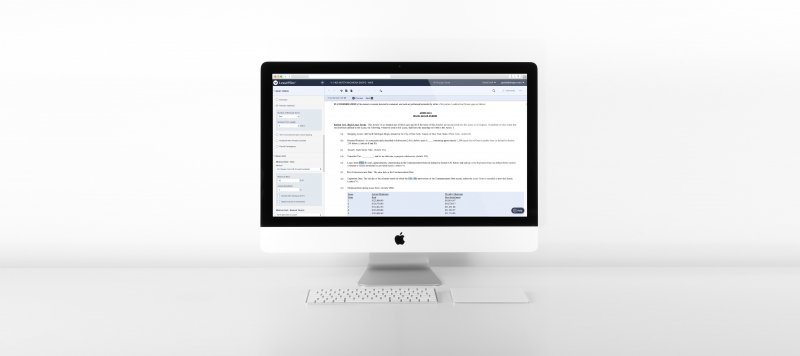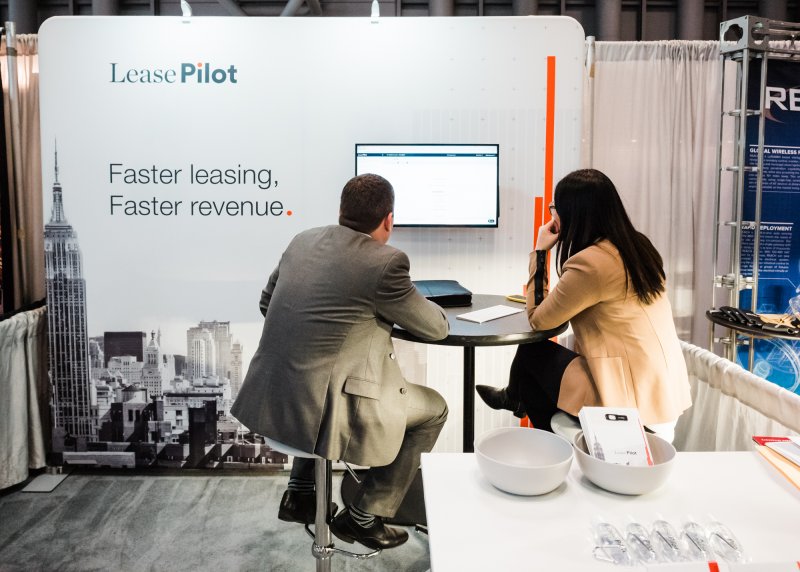The following article was originally published in Law360 on Feb. 21st, 2019
Using technology from the 1990s simply isn’t going to cut it in today’s legal world. To do any job well, you need the proper tools. Why then are legal teams in the commercial real estate industry asked to use traditional word processing software that has remained relatively unchanged for a quarter century?
Commercial real estate can no longer lag behind. It’s time to adopt new legal technology that enables their teams to do their jobs better and deliver more value to their clients. Now is the time to shift away from outdated and antiquated processes and move into a digital, efficient future.
If technology can improve so many aspects of the legal process, why then are lawyers often so hesitant to embrace it?
First, there’s monetary concerns. Not the money to implement new technology, but hesitations around lost revenue because of industry-standard fee structures and billable hours. For some, there’s a fear that technology reduces billable hours and makes lawyers less profitable. However, time saving technology actually increases the value of your time by allowing you to focus on higher-level tasks, like critical thinking, problem solving and reasoning. Isn’t that the reason so many of us began practicing law in the first place?
Some hesitation to adopt technology comes because the practice of law is based on convention; on a foundation, practices and principles that were adopted decades ago. Lawyers, by nature are change-averse. Going against the status quo introduces the possibility for error; and when mistakes are made, the blame is first placed on the legal team. It’s often easier to embrace the “if it’s not broke, don’t fix it” mantra, than to take what would be worthwhile risks.
Across virtually every other industry, we’ve adopted modern technology that make people’s jobs easier. But lawyers are stuck with outdated tools. There’s an expectation that the legal profession can work as quickly and as efficiently as others, because if one industry has great technology, then everyone must, right? But this isn’t the case. Lawyers aren’t set up for success; it creates a point of tension and an expectation gap between the legal profession and their peers in other sectors.
Ironically, the technology that lawyers do have access to often makes our jobs harder. That’s because, for the most part, the tools are developed by technologists who think about the overall business impact, rather than how the tool is utilized by the end user. Yes, the tools are there, but they aren’t the right tools for lawyers to do their jobs effectively. Instead, these “solutions” often end up being an added burden that makes lawyers’ lives harder. There’s a disconnect between what attorneys need, and what engineers and developers think they do. The industry desperately needs technology solutions that are developed with lawyers’ pain points top of mind.
Before we get too ahead of ourselves, let’s define what we mean by technology. Technology is not just artificial intelligence, self-driving cars and smartphones. More broadly, technology can be defined as the tools and skills produced by people that are used to complete a task.
In this sense, a traditional paper document is also technology (albeit an antiquated one). The paper document remains a relevant and powerful technology tool because it is inherently flexible. This flexibility allows us to use documents to communicate even the most abstract information in a variety of ways, from letters to invoices. While word processing software can be a great tool to create some types of documents, the lack of an underlying logical structure that connects interdependent terms is not ideal for facilitating procedural or transactional records that are commonplace in the legal industry.
Why do these technical details matter to commercial real estate lawyers? Leases provide a great case study as to why lawyers need technological tools to help us create transactional records. Leases are filled with dependent clauses and calculations, requiring changes in numerous places throughout the often lengthy document when even minimal deal terms are changed. With traditional word processing software, the underlying ideas and business concepts in the lease are not connected to the words in the document and therefore when the deal changes, the many places in the lease that need to reflect that change must be manually updated. The process of revising a lease requires painstaking attention to detail from a seasoned lawyer who knows his or her leases inside and out. This tedious process takes the attention and brain power of legal teams.
After the lease is signed, the legal and leasing teams in a commercial real estate organization must create an abstract, the bane of the entire industry. This process of extracting key details from pages and pages of information, translating paper documents into actionable information isn’t the reason I began practicing law — and I think you’d be hard-pressed to find someone who did.
While tedious, the abstract is an invaluable asset used to inform other key business departments, like accounting, which can use the information to create forecasts and projections. With data-driven technology, legal teams can unlock that data much faster and easier. Instead of a person parsing information and manually breaking down data silos, software applications talk to each other, swapping key data and information that make various processes faster.
Document automation can increase efficiencies, but not all document automation is created equal. An important factor in adopting any legal technology is that the technology is built with whatever work that industry does in mind. For commercial real estate, general purpose document automation is slightly faster than Microsoft Word, but will generally require that manual, time-consuming work present in most current leasing workflows because it is not built to handle the complexity of lease drafting and negotiation, nor can it help with iterations of leases after the first draft, for instance.
This is because the automaton is not embedded in the document itself. With most current forms of automation, users are merely filling out questionnaires with loose ties, if any, to the underlying document. Without the context within the document while you fill out the document assembly fields, it can be difficult to understand. Standard form questionnaires for this type of automation also do not necessarily allow for the required customization, which leads us back to using inefficient tools like traditional word processing software to complete drafts.
To truly get the most out of technology, it’s important to seek out specialized software that utilizes what we refer to as context-aware automation, meaning that the automation appears next to or is even embedded in the document itself. While I could get into the technical details about how such software maps interconnected terms that automatically updates thanks to a built-in logical framework that monitors, tracks and reacts appropriately to changes large and small, the key here is that automation is the most beneficial when you can understand the context in which that text appears in your document. This idea of context-aware automation is useful for other types of legal work and can be applied to other types of contracts, like loan documents or equipment leasing.
This is where you might be asking yourself, “Are these automation tools going to take my job?”
These tools are not designed to make lawyers expendable, but they are designed to help enhance the work that you do each and every day. Technology isn’t your enemy; it’s your best friend. It creates efficiencies that free up time, minimizes risk and gives you the ability to spend more time thinking critically and solving challenging problems.
It may seem obvious to say that automation saves time. It can, for instance, take a 90-day leasing process and cut that down to 30 days. For lawyers, it means improving on turnaround time. Leasing is time-sensitive work and current tools make it impossible to meet both internal and external expectations. In a world where waiting a week for a draft contract is too long, technology can turn you from a perceived deal killer into a deal maker by speeding up what are currently outdated processes.
Further, technology helps to reduce the likelihood that there are mistakes in leases, reducing risk and creating what amounts to quality control standards. If we’re honest with ourselves, lawyers like to be in control. While you may feel you lose a bit of control by turning over some aspects of your work to technology, in the big picture sense, you’re gaining further control and establishing consistency, which minimizes risk. In commercial real estate, there is a lack of consistency because of how imperfect current tools are at creating leases. Forgetting to delete terms or language can have real financial and portfolio management consequences. That drives the need for a fussy, meticulous editing process done by an attorney who knows best what language is needed and where. Technology aids you in establishing standardized language and processes across the company’s portfolio, leading to more predictable and desirable business outcomes.
More importantly, utilizing the right technological tools means that lawyers can stop spending inordinate amounts of time on routine, uninspiring and banal work. It would be surprising to find a lawyer who went to law school to do tedious busy work. Lawyers go to law school to practice law. Technology can remove administrative tasks, giving you the freedom to inject your legal expertise and move the industry in which you work forward. Our brains can undertake creative, strategic work that requires critical thought, something machines cannot complete. This is the meaningful work that you should, and can, be focused on. With technology, you can deliver a valuable, better product and become the valuable service provider you want to be.
It’s not a question of if, but when, these data-driven technologies will change the practice of law as we know it. We as lawyers must begin to embrace this technology and have a seat at the table in terms of helping companies understand where our pain points lie and how technological advancement can address them. And there is no time like the present.

